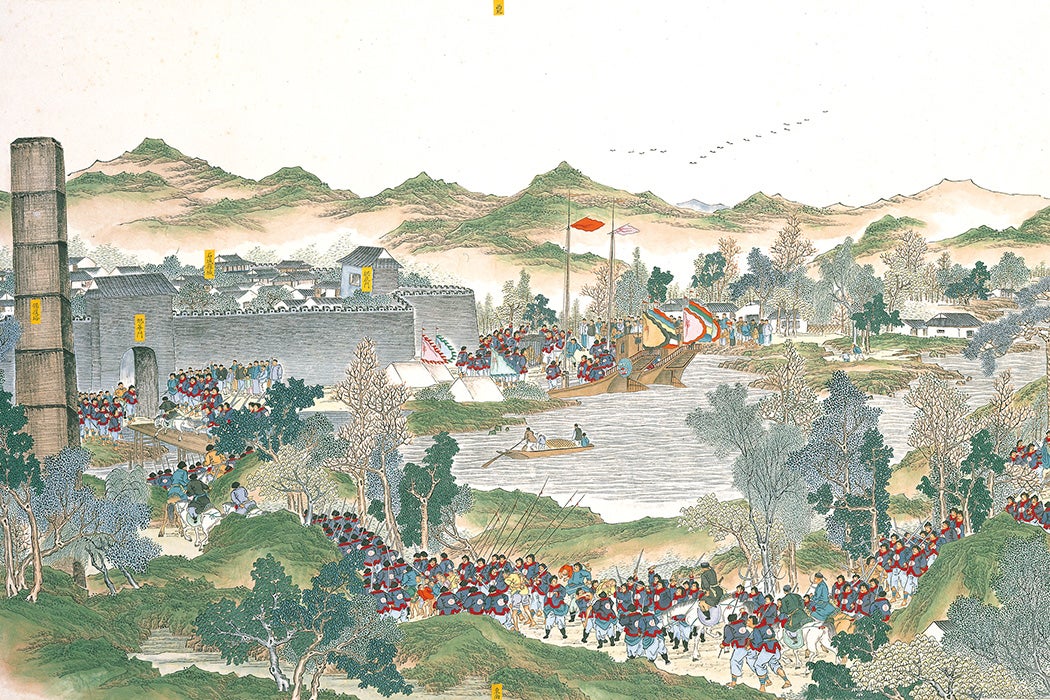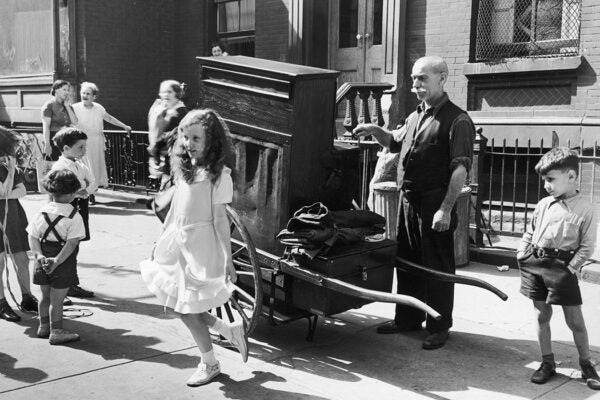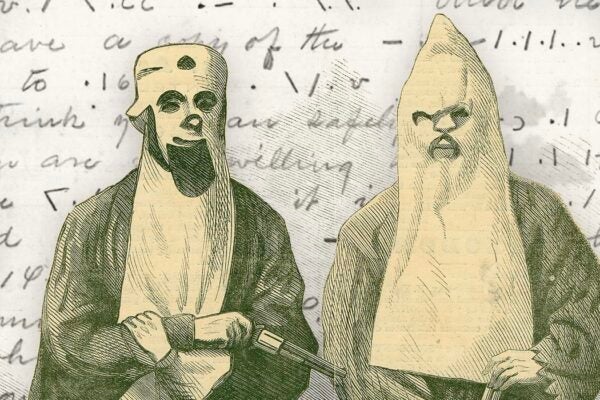The American Civil War (1861–1865) was the most destructive war in which Americans have ever been involved. About two percent of the total population perished. And even though the conflict has passed beyond living memory, the war’s wounds clearly remain, as seen most recently in the protests over Confederate memorials.
American exceptionalism defines the civil war, our civil war, as the event of the nineteenth century. There was, however, another cataclysmic civil war raging during the same period on the other side of the world. Eight months before the Confederate surrender at Appomattox on April 9, 1865, Qing Dynasty forces captured Nanjing, capital of the Taiping Heavenly Kingdom, essentially ending a fourteen-year war in China.
“Inspired by Christian-inflected messianic visions and fueled by social dislocation, race hate, and anti-state discontent,” writes historian Tobie Meyer-Fong, “the Taiping War […] has been characterized as one of the most devastating wars in human history due to its staggering death toll.”
Five to ten percent of the Chinese population died in the struggle: twenty million dead is the figure typically seen, although higher figures have been proposed. Meyer-Fong writes that the “absence of accurate demographic data makes it impossible to know with any precision how many people died,” but the sources, “testify insistently to unprecedented carnage of appalling scope and scale.”
The Taiping Heavenly Kingdom Revolutionary Movement, as the period is known in Chinese, began in 1850 when people rallied to Hong Xiuquan. Styling himself the second son of God, younger brother of Jesus Christ, Hong led a revolutionary army against the Manchurian Qing, who had ruled China since 1644, to establish a “Heavenly Kingdom of Peace.”
The resulting war is usually termed the Taiping Rebellion in English-language historiography. Meyer-Fong suggests that “rebellion” is biased in favor of the victorious Qing. As victors do everywhere, the Qing were the first to write the history of the war. To guarantee their version, they tried to destroy all records of the Taiping. Meyer-Fong argues that the war should definitely be called a civil war, perhaps the most violent in human history.
In the immediate aftermath of the capture of Nanjing, the Qing consolidated their victory, even though fighting actually continued in the south of China for several more years. The victors commemorated their version of events with an “elevated moral language of military achievement, collective sacrifice, and imperial revival.” But they couldn’t “excoriate (and extirpate)” every Taiping, so the struggle over the history of the war continued.
“Tension over the war’s meaning (and credit for the victory) continued well into the postwar period, ending decisively only when the dynasty ultimately ended in 1912,” Meyer-Fong writes. With the birth of the Republic of China, there was a complete flip in the way the war was remembered. It was now “a cornerstone of revolutionary nationalism, and thus an essential element in the foundational myths of modern Chinese nationalism.”
Weekly Newsletter
Early twentieth-century revolutionaries “appropriated racialist anti-Manchu passions associated with the Taiping moment to their anti-dynastic project. They adopted the Taiping as role models and heroes.” Sun Yat Sen, the first President of the Republic of China, “fancied himself as a modern Hong Xiuquan, whom he identified as a fellow rebel against dynastic authority and as a southerner.”
To make the Taiping War “a forerunner of twentieth-century revolution,” however, “much uncomfortable detail had to be erased in the process,” Meyer-Fong explains. The megalomanic Hong, after all, was given to purging his allies, so he seems less akin to Sun Yat Sen than Chinese Communist Party leader Mao Zedong. “The former good guys became villains, and vice versa; lost Taiping materials were rediscovered in Western libraries or forged.”
Meyer-Fong entitled her book on the subject What Remains: Coming to Terms with Civil War in 19th Century China. The commemoration of such national traumas remains fraught long after the fighting has ended.







